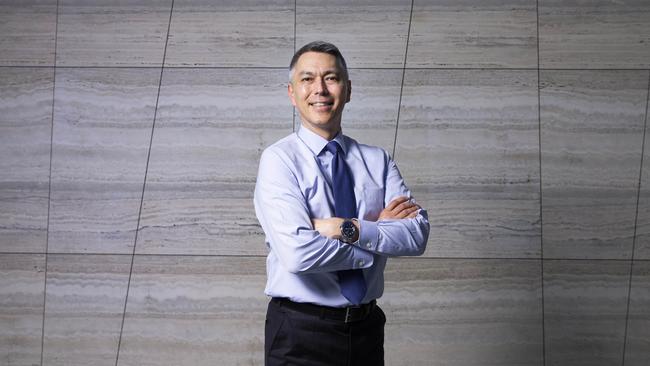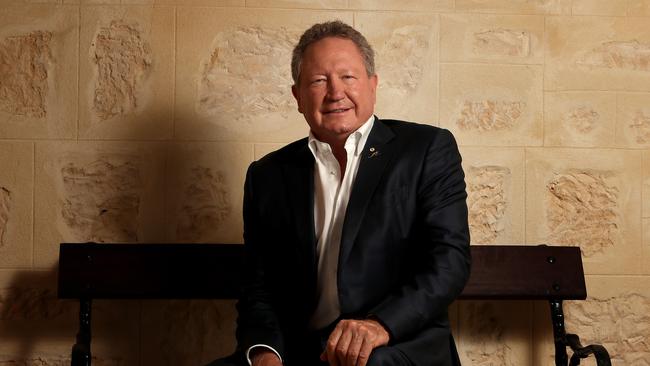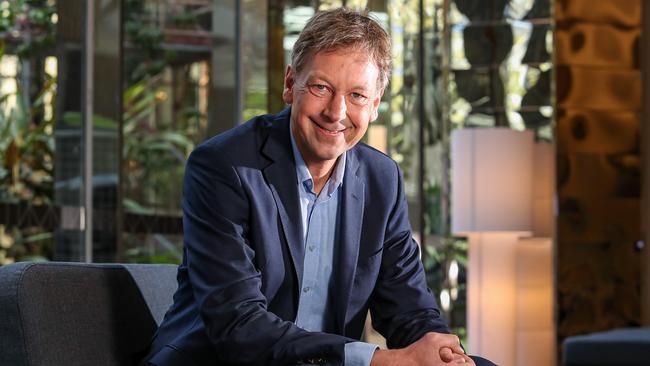BHP and Rio Tinto offer to spend big to expand in nickel and lithium
BHP and Rio Tinto have opened the coffers in an attempt to muscle in on the global battery metals supply chain.

BHP and Rio Tinto have opened the coffers in an attempt to muscle in on the global battery metals supply chain, throwing down a combined $3.6bn to capture a slice of the booming demand for batteries and electric vehicles.
But while both are keen to reposition their portfolios to capitalise on battery metals demand, the pair are pursuing different strategies.
Rio Tinto confirmed on Tuesday night it had committed $US2.4bn ($3.2bn) to its Jadar lithium project in Serbia, which the company claims is one of the world’s biggest undeveloped lithium projects.
BHP has long said it does not see a commercial case for lithium project development, and has instead centred its strategy on nickel.
It said overnight it would challenge Fortescue Metals founder Andrew Forrest for control of Canada’s Noront Resources, offering a 70 per cent premium to the company’s last market price in a move to expand its nickel presence beyond its existing Australian Nickel West business.
The $C325m ($350m) offer for Noront has been pitched to entice Mr Forrest to sell his 37 per cent stake in Noront, held through private investment vehicle Wyloo Metals, and abandon his own offer for the company.
The iron ore magnate captured the Noront stake in a deal with Resource Capital Funds in 2020 and launched a takeover bid in May.
While the BHP offer has the support of the Noront board, it is not yet clear whether Wyloo will sell into the bid or increase its own offer.
Wyloo said it was reviewing its options after the BHP bid.
“Our cornerstone position in Noront Resources is part of our investment strategy to support the discovery and development of critical materials needed to power the decarbonisation of the global economy. We are continuing to review our investment in Noront as part of this long-term commitment,” a spokesman said.
The on-market bid for Noront also signals a shift in acquisition strategy for the mining major under the leadership of Mike Henry and chief development officer Johan van Jaarsveld.
BHP has taken an equity stake in a number of exploration juniors over the last few years, including ASX-listed SolGold, and has been active in forging joint venture partnerships with smaller companies, or buying assets outright.
But the on-market takeover offer for Noront, although relatively small, is the first time BHP has launched a takeover bid for a listed company since its ill-fated $US12.1bn acquisition of Petrohawk in 2011.
That disastrous foray into the US shale sector eventually cost BHP boss Marius Kloppers his job and led to BHP adopting a far more conservative growth strategy, which BHP is only now showing signs of breaking free from amid talk of a renewed commodity super-cycle.

Rio, meanwhile, has thrown down a challenge to the government of Serbia to approve its Jadar lithium project, saying it is prepared to spend the $US2.4bn needed to develop the lithium carbonate resource.
It would make Rio the biggest lithium producer in Europe, positioning the global mining giant as a key supplier to major European automotive manufacturers as they retool their factories to shift to electric vehicles.
Jadar would be ready to produce lithium within five years under Rio’s plans, but the company still needs to win government and community support for the project amid growing local opposition to its development plans – including recent suggestions from Serbian President Aleksandar Vucic that a referendum could be needed before approval is given.
Rio says the mine and downstream processing facilities would produce about 58,000 tonnes of battery grade lithium carbonate a year, plus 160,000 tonnes of boric acid and 255,000 tonnes of sodium sulphate.
Opposition to the mine has been centred around heritage issue, as Jadar borders on a Bronze Age heritage site, the underground mine would extend beneath a local river, and locals have complained the project’s footprint could force local villagers to leave the area.
Rio says the project could grow Serbia’s GDP by up to 4 per cent, including indirect benefits, and would create 1000 ongoing jobs at the mine.
Rio Tinto chief executive Jakob Stausholm said Rio was committed to the “highest environmental standards” at Jadar, and the company would listen to the views of the local community as it pushed for development of the mine.

BHP’s move is focused on Norwood’s Eagle’s Nest nickel project, touted as the best high-grade Canadian nickel project since the discovery of Vale’s Voisey’s Bay.
BHP chief development officer Johan van Jaarsveld said Eagle’s Nest represented a “world class growth option”.
“The highly prospective Eagle’s Nest nickel project provides an excellent platform from which to develop further opportunities in Ontario’s Ring of Fire,” he said.
Rio and BHP have differing views on the best commodity to give them greater exposure to the battery metals boom – outside of copper, which both are scrambling to increase their options in.
Rio has picked lithium through Jadar and BHP has doubled down on nickel, through expansion plans at its WA Nickel West assets and earlier moves into Canada through an exploration joint venture with Midland Exploration.
But both have signalled their willingness to move up the value chain in order to capture more of the cash available in what are relatively small markets compared to their traditional strengths in iron ore, copper, and other bulk minerals.
A lithium carbonate plant is an integral part of Rio’s plans for Jadar, and BHP has said it expects to soon produce the first nickel sulphate from a new plant at its Kwinana nickel refinery south of Perth.






To join the conversation, please log in. Don't have an account? Register
Join the conversation, you are commenting as Logout